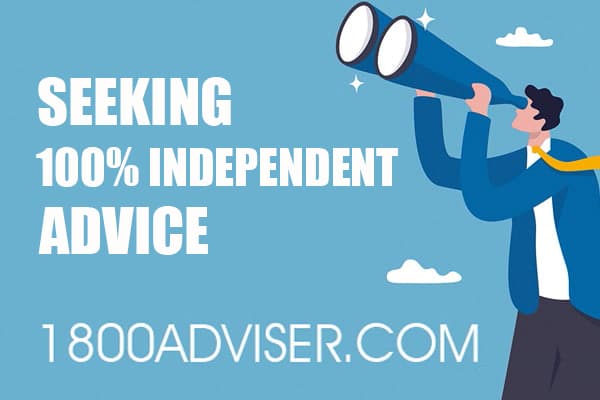Americans turning 65 this year may be in for a big surprise with respect to 2023 Medicare costs. Importantly, out-of-pocket health costs can be enormous. In 2023, the annual Part B premium and deductible (for doctor’s visits and home health care) totals $2,205, and the Part D prescription drug premium can run up to $505. Then there are co-insurance costs and medication co-pays before Medicare’s catastrophic coverage kicks in. A hospital stay has a $1,600 deductible. And this year’s out-of-pocket maximum for private insurers’ Medicare Advantage plans can hit $8,300 to see in-network doctors.
Medicare Savings Programs and Extra Help
What many Medicare beneficiaries don’t know, however, is that there are five government programs that can sharply reduce Medicare out-of-pocket costs for low- and middle-income people. These are joint programs from Medicare and Medicaid for people who are generally at, or slightly above, the poverty line. The programs help pay Medicare Part A, B, and D premiums and deductibles, co-insurance, and co-payments.
Four of the initiatives are called Medicare Savings Programs (MSPs), also known as Medicare Buy-In programs or Medicare Premium Payment Programs. They offer substantial savings on Medicare Parts A and B. AARP estimates that at least 1.47 million Americans could save about $2,000 or more each year through MSPs. The fifth Medicare subsidy program, for saving on Part D prescription drugs, is known as Extra Help. You automatically qualify for it if you’re approved for one of the three main Medicare Savings Programs. The Social Security Administration estimates Extra Help is worth up to $5,000 a year.
Why so few eligible people sign up
Only about half of people who qualify for Medicare Savings Programs use them, however. A February 2023 AARP report noted that historically MSP enrollment has been low despite efforts to increase participation. In North Dakota, just 7% of Medicare beneficiaries are enrolled in the programs.
Many people don’t know about these programs. Some don’t want to apply because they think other people need the programs more than they do. Some don’t trust the government. And some don’t understand the programs.
Complicated rules and applications
The Medicare Savings Program rules are complicated. The Centers for Medicare and Medicaid Services site has a ghastly instructional diagram called Navigating the Medicare Savings Program (MSP) Eligibility Experience that goes on for six pages.
In recent years, a few states such as Connecticut, Indiana, Maine, Massachusetts, and New York have increased the eligibility limits or simplified the application process in hopes of reaching more people in need.
New York, for instance, has recently raised income limits and removed asset restrictions, allowing up to 300,000 more residents to enroll. The state’s application has been streamlined to just one page. New York’s Health Insurance Information, Counseling and Assistance Program, part of the State Health Insurance Assistance Programs (SHIPs), is actively promoting these programs to help residents save up to $7,000 annually.
However, in some states, applying for MSPs can still be a cumbersome process. Lengthy forms and detailed documentation of income, assets, and even life insurance policies are often required. Nonetheless, Medicare beneficiaries who qualify for MSPs can apply at any time, not limited to the Medicare Open Enrollment period. It’s important to note that reapplication is necessary each year to continue receiving MSP or Extra Help benefits.
Five Medicare Saving Programs
Here’s a brief guide to the five Medicare Savings Programs, with the caveat that income and resource limits may vary by state:
- Qualified Medicare Beneficiary Program (QMB): Covers Part A and B premiums, deductibles, coinsurance, and copayments. Monthly income must not exceed $1,235 or $1,663 for a married couple ($14,820 or $19,956 annually), and resources generally need to be below $9,090 ($13,630 for married couples). QMB beneficiaries automatically qualify for the Extra Help program, limiting prescription drug costs to no more than $4.30 per covered drug.
- Specified Low-Income Medicare Beneficiary Program (SLMB): Assists with Part B premiums. Monthly income can be slightly higher than QMB, with limits of $1,478 per month or $1,992 for couples ($17,736 or $23,904 annually). SLMB recipients also qualify for the Extra Help program, capping maximum out-of-pocket prescription costs at $10.35 per covered drug.
- Qualifying Individual Program (QI): Like SLMB, it helps pay for Part B premiums. Monthly income can reach up to $1,600 for individuals or $2,239 for couples ($19,200 or $26,868 annually). Priority is given to individuals enrolled in the QI program the previous year. QI beneficiaries also receive Extra Help assistance, and their maximum out-of-pocket prescription costs are $10.35 per covered drug.
- Qualified Disabled & Working Individual Program (QDWI): Covers Part A premiums for individuals under 65, working with a disability, and having limited income and assets. Monthly income limits are higher compared to other MSPs, allowing up to $4,975 or $6,659 for married couples ($59,700 or $79,908 annually). The resource limit is $4,000 for individuals and $6,000 for couples. QDWI beneficiaries do not qualify for Extra Help.
- Extra Help: To qualify, you must be enrolled in a Medicare Prescription Drug plan (Part D) and Medicare Part A and/or Part B. Combined savings, investments, and real estate (excluding the primary residence) cannot exceed $16,660 ($33,240 for married individuals). To apply for Extra Help, you can submit an application through the Social Security site. The program significantly reduces prescription drug costs, making medications more affordable for eligible individuals.
Medicare beneficiaries can significantly benefit from these programs, which can substantially alleviate the financial burden of healthcare costs. However, navigating the complex rules and applications can be challenging. Seeking assistance from a Fee-Only professional adviser can provide valuable guidance in understanding eligibility criteria, completing applications, and optimizing the use of available programs.
About This Article
This article was originally published in The Medicare Maze Newsletter™ and consists of educational materials; it should not be construed as financial, tax, or legal advice. Prepared by Medicare-Adviser.com, a trusted source of independent ideas, it provides free educational resources and connects users with a network of independent Fee-Only financial advisers, accountants, attorneys and other professionals. For 100% Independent and 100% Objective Advice℠, schedule a FREE consultation today at 1800ADVISER.com, the only toll-free online directory of independent Fee-Only professionals. Both Medicare-Adviser.com and 1800Adviser.com are owned and operated by The Independent Adviser Corporation. For additional information, please refer to their Privacy Policy and Terms of Use, Legal Notice, and Disclaimer.
.







